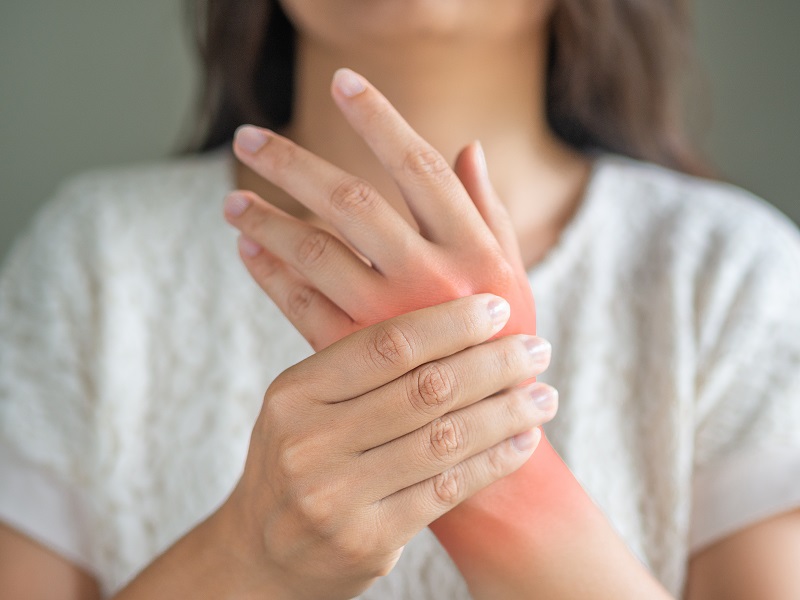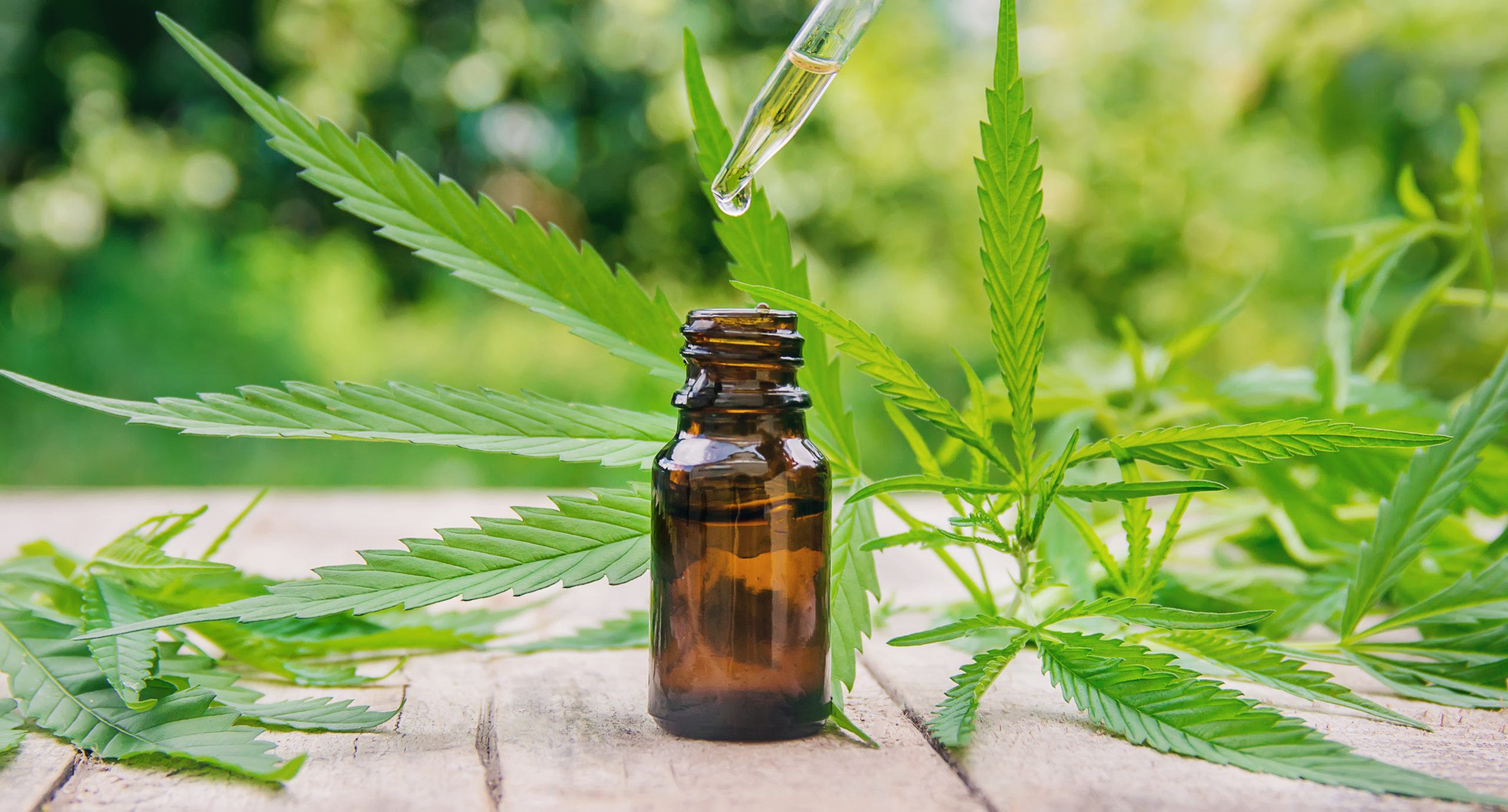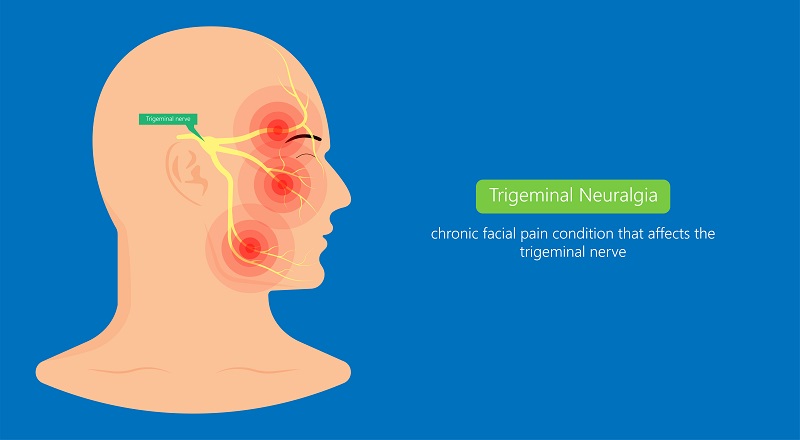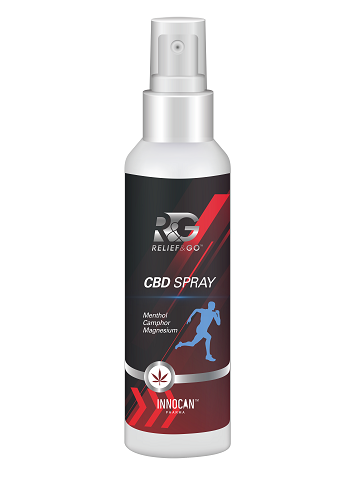CBD for Arthritis – The Latest Research

CBD, or cannabidiol, is slowly but steadily making its way from back-alley hokum to mainstream medicine. Whereas few people had heard of CBD a few years ago, it is poised to become a 22 billion dollar industry by 2022, according to some industry analysts.
CBD is a compound derived from the hemp plant. Hemp falls within the cannabis family along with marijuana, but they differ based on the amount of phytocannabinoids they contain. Marijuana contains an abundance of THC (tetrahydrocannabinol), the substance responsible for the famous high it produces when smoked or ingested. Hemp, on the other hand, contains less than 0.3% of THC and therefore does not produce any psychoactive effects.
CBD has been touted for a wide variety of serious health issues. Most notably, its effectiveness in mitigating symptoms of certain childhood epilepsy strains has formed the strongest scientific evidence. CBD is also effective in treating anxiety and insomnia. One may wonder whether CBD can be used to treat physiological ailments as well.
Arthritis is a disease of inflammation of the joints. The joints are protected by cartilage, a flexible connective tissue. Reduction in the amount of cartilage can cause arthritis. This can occur through wear and tear of the joints, injury, or infection. In the United States alone, 23% of all adults have arthritis. They experience joint pain, stiffness, swelling, and other symptoms that limit their range of motion. Common treatment, besides strengthening joints, is to reduce pain with heating pads, ice packs, or medication.
Given the strong evidence of using CBD for inflammatory symptoms, the question had to arise at some time about whether it can be used for arthritis treatment and pain relief. Preliminary research and some patient reports seem to suggest that it can.
Scientific studies
There are already a few studies that have investigated the use of CBD for pain and inflammation. In 2016, researchers treated arthritis-afflicted rats with CBD gel for four days in a row. The rats were given applications at varying doses. At low doses, researchers found no improvement in pain scores. However, the rats that were given a higher dose had significantly improved symptoms, and the highest dose group had the same results. It appeared that there were no side effects, even with a substantially higher dosage (source).
A 2017 study on rats with osteoarthritis found that the administration of CBD helped to reduce pain and inflammation symptoms. The study concluded that CBD might be a useful therapy to treat osteoarthritic joint neuropathic pain (source).
In 2018, arthritic dogs were fed CBD oil for four weeks twice a day. While rats are common test subjects in clinical trials, interest was growing due to the difficult symptoms in dog arthritis. It was seen that the subjects experienced a significant decrease in pain symptoms and increased comfort and activity levels. No side effects were observed (source).
In 2019, a German study evaluated the effectiveness of using cannabinoids to treat rheumatoid arthritis. The study included in its purview all cannabinoids, not just CBD. The researchers discovered that cannabinoids did help in reducing pain and inflammation, noting that the right receptors needed to be targeted. Targeting the wrong receptors could lead to negative, pro-inflammatory effects. When it came to CBD, the scientists observed that positive effects were observed independent of cannabinoid receptors (source).
Going back in time to 2006, one of the earliest studies on the effectiveness of cannabinoids on arthritis was an assessment by the Royal National Hospital for Arthritis. The assessment reported on Sativex, a recent UK-licensed cannabis-based medication. Sativex contained both CBD and THC and was found to have suppressed disease activity following prescription. Pain relief was another symptom of taking the medication. However, it was unknown how much of these effects were attributable to CBD or THC (source).
The studies above are limited to animals. More knowledge of the effects on humans is required before doctors can begin prescribing CBD for arthritis patients.
CBD mechanism on arthritis
The human body produces endocannabinoids, compounds very similar to cannabinoids. The endocannabinoid system consists of these endocannabinoids, their receptors, and enzymes. It functions alongside other major pain systems such as the endorphin and inflammatory system via receptors in the brain and spinal cord. It has been found in animal studies that when the endocannabinoid system was inactivated, animals experienced abnormal pain sensitivity. This has led scientists to believe that the endocannabinoid system has a role in modulating pain.
When injury or inflammation occurs, the body releases anandamide. Anandamide is a compound that reduces the intensity of pain. At the same time, an enzyme called FAAH (fatty acid amide hydrolase) works to rapidly decompose anandamide. CBD has been shown to slow the degradation of anandamide, prolonging pain relief in the process.
A symptom of rheumatoid arthritis is increased sensitivity to pain or hyperalgesia. It occurs when the heat is detected by the vanilloid receptor in the body. CBD has demonstrably been successful in abolishing hyperalgesia. CBD can also moderate the perception of pain through activating serotonin receptors. Serotonin receptors have a role to play in pain management.
Types of CBD products
CBD products come in forms that can be inhaled, ingested, or topically applied. Each has its own pros and cons:
1) Ingested CBD – CBD taken orally may be a capsule, food, or liquid. When eaten, it is absorbed into the digestive tract where stomach acids, prior meals, and other factors may have unknown effects. Absorption is slow, and the time from ingestion to the onset of effect can be one or two hours. Capsules are the form used to treat seizure disorders and digestive issues.
Experts advise against CBD via edibles because dosing can be an uncertain business. Edibles like gummies and cookies are appealing to children but do not yet come in childproof containers, presenting some risks.
CBD can also be consumed by holding liquid from a spray or tincture (a bottle that comes with a dropper) under the tongue for one to two minutes. The taste may be unpleasant, but effects can be felt between 15 and 45 minutes. CBD can be absorbed directly into the bloodstream by this method.
2) Inhaled CBD – A vaporizing pen or a vape is the apparatus that is used to inhale CBD. Inhalation of vapor oils and chemical by-products carry other risks for people with arthritis. Hence, trying vaping as a method of CBD consumption is not recommended.
3) Topically applied CBD – CBD topicals ranging from lip balms, pain relief spray, pain relief roll-on, pain relief cream to eye serums are great for localized results. They interact directly with the skin rather than passing through to the bloodstream. Whether the CBD can be transmitted below the skin is unknown. Usually mixed with other ingredients like menthol, capsaicin, or camphor, it is difficult to determine whether benefits are due to CBD or some other ingredient.
Public perception
Even in the absence of clear scientific consensus regarding CBD, arthritis patients are not waiting to try it. The Arthritis Foundation conducted a survey of 2,600 arthritic patients in 2019. The survey found that 79% were either using CBD, had used it in the past, or were seriously considering using it for pain relief. 29% of the respondents were using CBD at the time, and three out of four reported it gave them relief (source).
Another survey by California researchers published in July 2018 in Cannabis and Cannabinoid Research of 2,500 people established the top two medical conditions for which people take CBD: chronic pain and joint pain. Anxiety, depression, and insomnia were the next three on the list that commonly affects people with arthritis. It was found that 62% of CBD users were using CBD to treat a medical condition of some sort (source).
Guidelines from the Arthritis Foundation
There is still no guidance on CBD dosing, but its potential is intriguing. The Arthritis Foundation conceded that scientific studies on CBD are lacking. However, based on their survey, they could not deny the willingness of people to give the treatment a shot. Although there are still no established guidelines for CBD use, the experts at the Arthritis Foundation could agree on the following points:
1) Although CBD has positive effects on anxiety, chronic pain conditions, and insomnia, it is important to keep in mind the lack of scientific research around the subject.
2) While no major safety issues have come up with CBD use, potential drug interactions have been uncovered. The patient may not need to avoid CBD completely. But it’s important for the patient and the doctor to pay closer attention to symptoms and side effects. Corticosteroids, some antidepressants, and some prescriptions for fibromyalgia are some of the medications that raise interaction concerns.
3) CBD is not advisable to be used in place of DMARDs (disease-modifying anti-rheumatic drugs) that work to prevent permanent joint pain due to arthritis. CBD can help with the symptoms of the disease, but there is no evidence that it can alter the course of the disease.
4) If an arthritis patient is considering medicinal CBD, it is advisable to discuss it with your doctor prior to starting treatment. Schedule follow-up visits at least once every three months, as with any new treatment. Even if your doctor may not have heard of it, it’s advisable to keep the medical professional involved in the know.
5) When taking CBD in liquid form, it is important to note that it is often mixed with a carrier oil. Gain an understanding of the amount of liquid product to take in each dose, and the amount of CBD contained therein.
6) Introduce your system to CBD slowly. Limit your intake to just a few milligrams twice a day taken sublingually (that is, under the tongue). Stick to this dose for a minimum of a week at first. If you still do not notice results, increase the dose by the same amount over the next week. If needed, go up by small increments over the next few weeks until you find what’s right for you.
7) The Arthritis Foundation recommends staying away from CBD delivery systems other than capsules, spray bottles, or tinctures.
8) When you find relief, stick to that same dose daily to maintain a stable level of CBD in your bloodstream.
9) If you are in a state in the United States where medical or recreational marijuana is legal, you have another option if CBD alone does not work for you. Talk to your doctor about combining the CBD you are taking with another product that contains a low dose of THC. Even at low levels, THC can have psychoactive effects. If you are going to try it, consuming it at night at home can help you sleep off any unwanted effects.
10) If, after a few weeks of trying various forms of CBD, you are unable to derive any benefits, CBD may not be for you. After six to eight weeks of taking it, you should notice some differences. However, there is no reason to keep taking it beyond this period if it does nothing for you.
11) Any unwanted side effects should be taken immediately to your doctor for examination. Discontinue CBD immediately if this occurs.
12) When looking for a source or seller, be sure to purchase your CBD products only from reputed brands. These brands should be testing each batch for purity, potency, safety, and integrity in an independent laboratory. A certification from the company will also add to its credibility. The CBD industry is still new and unregulated. Look for companies that follow best practices established by the Food and Drug Administration (FDA) in relation to pharmaceuticals and dietary supplements.
Conclusion
The potential of CBD to help treat arthritis and other afflictions is immensely promising. CBD is generally considered a safe option to test. While more human studies are required, and the industry is still trying to establish best practices for usage, numerous studies have shown compelling evidence. CBD may be just the solution that patients with arthritis have been waiting for.
More articles:










